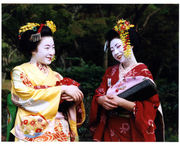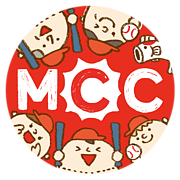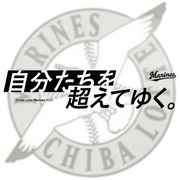通訳案内士(通訳ガイド)試験受験対策<2010年度英語第2次試験の模範解答例(その3)>
2010年度英語第2次試験の下記問題群の模範解答例を提示させていただきます。
【5】問題群(5)(15:30〜16:30)
【6】問題群(6)(16:30〜18:00)
毎年、同じような質問が繰り返し出題されています。
受験者は、自分が言いやすい文型、内容に組み替えて準備しておくことが重要です。
━━━━━━━━━━━━━━━━━━━━━━
<タイ語の試験問題用紙のコピー>送付のお願い
━━━━━━━━━━━━━━━━━━━━━━
タイ語の試験問題用紙(またはコピー)をお送りいただける方を探しています。(出題傾向の分析のため)
・鉛筆の記入があるものは、綺麗に消してからコピーを取ってください。
・ご協力いただける方は、下記宛てにご連絡をお願いします。問題用紙の送付先などをお知らせします。
・御礼としまして、薄謝をご提供させていただきます。
info@hello.ac
━━━━━━━━━━━━━━━━━━━━━━━━━━
2010年度英語第2次試験の問題群(5)(6)とその模範解答例
━━━━━━━━━━━━━━━━━━━━━━━━━━
【5】問題群(5)(15:30〜16:30)
(1) なぜ日本には塾や予備校がそんなにたくさんあるのか。
Why are there so many cram schools or preparatory schools in Japan?
In Japan, graduation from a prestigious university is highly desirable because it is believed to ensure a good career and high social status.
Parents believe that just attending regular schools is not enough for children to pass entrance examinations to prestigious universities, so they often send their children to private cram schools, or juku. Students who fail to pass university examinations often enter preparatory schools, or yobiko, to prepare to take the examinations again the next year.
●予想問題
・日本の教育制度について教えてください。
(2) 日本で旅行するのに最も良い季節はいつか。
What is the best season to travel in Japan?
Although each season has its own charm, the best season to travel would be either spring or autumn because the temperature then is pleasant and comfortable. In spring, I think April is the best time to travel in Japan because the cherry blossoms are in full bloom. In autumn, the leaves turn red, yellow and orange and are beautiful to see; and there are many wonderful, seasonal foods to try such as pears, persimmons, grapes, chestnuts, and mushrooms.
●予想問題
・日本の春(夏、秋、冬)の魅力は何ですか。
(3) お花見をするにはどこがお勧めか。
Where do you recommend for viewing cherry blossoms?
I would recommend Chidorigafuchi. Chidorigafuchi is close to the Imperial Palace. Kudanshita subway station is the nearest station to get there.
Hundreds of cherry trees decorate the moats of the former Edo Castle, now the Imperial Palace, around Kitanomaru Park, creating one of Tokyo's most outstanding cherry blossom sights. Rowing boats are available for rent.
Trees are lit up in the evenings. Many food stands can be found at nearby Yasukuni Shrine, where another one thousand cherry trees are planted.
●予想問題
・東京で、有名な桜の名所はどこですか。
・京都で、有名な桜の名所はどこですか。
・関西で、有名な桜の名所はどこですか。
(4) 日本で最も安く旅行する方法は何か。
What is the cheapest way to travel around in Japan?
Since transportation expenses will make up a considerable part of your travel budget, I would recommend you travel around Japan by bus. Now there is the new Japan Bus Pass that went on sale in summer 2010. The Japan Bus Pass is a revolutionary pass for long distance bus travel in Japan for budget travelers who do not mind sleeping on the bus. With the Pass, it costs less than 3,000 yen for a trip from Tokyo to Hiroshima; while a Shinkansen train ticket costs around 18,000 yen. If used efficiently, the pass can reduce transportation costs to unbelievably low levels for those willing to spend some nights on a bus. The pass can be used both by foreign tourists and residents of Japan, however, it has to be purchased outside of Japan. If you don’t have much time to travel by bus, you can also consider buying of the 7-, 14-, or 21-day rail pass.
(5) なぜ日本人はオリンピックが大好きなのか。
Why do Japanese people love the Olympic Games?
In addition to national pride, the same as that felt by all other people, Japanese love of the Olympic Games is partly because of the national character of the Japanese. They are fond of festive events and easily get
excited watching athletes try their best, regardless of country. And since
Japan is a small country, Japanese take pride in seeing their own athletes win and get recognition among the world, especially since they don’t have much chance to feel patriotic in their daily lives.
(6) 昭和の戦後の時代、日本はどのようであったか。
What was Japan like during the post war-period of the Showa era?
After Japan was defeated, the country was placed under the allied forces for six years, and underwent various democratic reforms. Japan’s postwar economy became stronger due to America’s support, a stable exchange rate of 360 yen to the dollar, and the prosperity resulting from the war boom during the Korean War in the 1950s. Having gone through rapid economic growth between 1955 and 1973, Japan became an economic power. Culturally, this was a period when all sorts of fads from America and Europe were introduced, and Japan became westernized quite rapidly.
(7)〔日本語での質問〕
あなたはどのような通訳ガイドになりたいか。
通訳ガイドになったら心がけたいことは何か。
【6】問題群(6)(16:30〜18:00)
(1) 紅葉を楽しむにはどこがお勧めか。
Where do you recommend for viewing autumn leaves?
I would recommend Mount Takao, which is certainly one of the best spots to see fall foliage near Tokyo, but it is bound to be quite busy around mid to late November during the season. Mount Takao, or Takaosan, is a wooded mountain with a temple and is a pleasant place just outside central Tokyo.
There, you can enjoy hiking in an autumnal, natural surrounding. The base of the mountain can be reached in just a 50 minute-train ride from Shinjuku.
(2) 京都について教えてほしい。
Please tell me about Kyoto.
Kyoto was the capital of Japan and home of the Emperor for over 1,000 years, starting in 794. The city is full of tourist attractions, which include old temples and shrines beautifully preserved. Over the centuries, Kyoto suffered destruction by many wars and fires, but due to its historic value, the city was dropped from the list of target cities for the atomic bomb and spared from air raids during World War II. Countless temples, shrines and other historically priceless structures survive in the city today. Also, Kyoto has three major festivals that are huge tourist attractions. They are the Gion Festival in July, the Aoi Festival in May, and the Jidai Festival in October
●予想問題
・京都について教えてほしい。
・奈良について教えてほしい。
・鎌倉について教えてほしい。
・日光について教えてほしい。
(3) なぜ日本では大都市が太平洋側にあるのか。
Why are big cities in Japan located on the Pacific side?
One reason is that the Pacific side, compared to the Sea of Japan side, does not have heavy snow in winter. As a result, the Tokugawa shogunate, for example, was based on the Pacific side that included the big cities of Edo (now Tokyo) and Osaka. During Japan’s modern, rapid economic growth between 1955 and 1973, Japan exported a tremendous amount of goods, which were shipped from the Pacific side facing the U.S.A. and other countries.
This resulted in huge investments being made in production facilities for heavy industry located along the Pacific coast from Tokyo to Osaka and Kobe.
From then on, those cities drew more and more people as well as capital.
(4) 日本の文化について何を外国人観光客に知ってもらいたいか。
What do you want foreign visitors to know about Japanese culture?
I would like foreign visitors to know about Japanese rice culture. Japanese people have lived more than 2,000 years with rice as their staple food.
They are a rice-cultivating people and rice is Japan’s most important agricultural product. Many things essential to Japanese culture are related to rice. Various food and drink, such as sake, rice cakes, rice crackers and dumplings are made from rice. On auspicious occasions, Japanese eat sekihan, or red rice, which is sticky rice steamed together with red beans.
And they serve it as an offering to their gods. Japanese sushi, famous around the world, is also made of rice, being mixed with vinegar, sugar and salt for taste.
●予想問題
・歌舞伎を説明してください。
・能を説明してください。
・狂言を説明してください。
・生け花を説明してください。
(5) 日本は安全できれいな国だと言われている。それは何故か。
Japan is said to be a safe and clean country. Why?
I think this is due to the koban, or police box system. There are a lot of koban at street corners. With koban, patrolmen are in the middle of their assigned areas. Koban officers patrol their areas regularly, have a register of local residents, and keep an eye out for anything that looks suspicious. When a crime occurs, they are close enough to move to the spot quickly. The koban system dates back to the Edo period. In addition, children are taught in school and by their parents to take anything they find to the koban. As a result, Japanese are taught to respect other people and their belongings.
(6) 日本語の文字体系について説明してほしい。
Please explain the Japanese writing system.
The Japanese language has three writing systems. One is called kanji, which are Chinese characters. Kanji represent nouns, concepts and actions. The two other writing systems are like alphabets and represent sounds. One is called hiragana and the other is katakana and both were simplified from Chinese characters. Hiragana are used in combination with kanji to make verbs, adjectives, and adverbs; and are used as sentence elements to specify the subjects, objects, indirect objects, etc. in sentences. Katakana are used for writing foreign words and describing sounds like “bang”, “boom”, “ding-dong” and such in Japanese.
(7) 平安時代はどんな時代だったのか
What was the Heian Period like?
The Heian Period was from 794 until 1192. During that time, emperors, aristocrats (like the Fujiwara family), and retired emperors ruled for a large part of this period. It was during the Heian Period when uniquely Japanese arts and literature, and not arts and literature based on Chinese culture, developed. One of the best examples is the novel “The tale of Genji.” In addition, the Japanese phonetic writing systems, hiragana and katakana, were developed, enabling the Japanese language to grow and develop its own characteristics.
(8)〔日本語での質問〕
あなたはどのような通訳ガイドになりたいか。
通訳ガイドになったら心がけたいことは何か。
2010年度英語第2次試験の下記問題群の模範解答例を提示させていただきます。
【5】問題群(5)(15:30〜16:30)
【6】問題群(6)(16:30〜18:00)
毎年、同じような質問が繰り返し出題されています。
受験者は、自分が言いやすい文型、内容に組み替えて準備しておくことが重要です。
━━━━━━━━━━━━━━━━━━━━━━
<タイ語の試験問題用紙のコピー>送付のお願い
━━━━━━━━━━━━━━━━━━━━━━
タイ語の試験問題用紙(またはコピー)をお送りいただける方を探しています。(出題傾向の分析のため)
・鉛筆の記入があるものは、綺麗に消してからコピーを取ってください。
・ご協力いただける方は、下記宛てにご連絡をお願いします。問題用紙の送付先などをお知らせします。
・御礼としまして、薄謝をご提供させていただきます。
info@hello.ac
━━━━━━━━━━━━━━━━━━━━━━━━━━
2010年度英語第2次試験の問題群(5)(6)とその模範解答例
━━━━━━━━━━━━━━━━━━━━━━━━━━
【5】問題群(5)(15:30〜16:30)
(1) なぜ日本には塾や予備校がそんなにたくさんあるのか。
Why are there so many cram schools or preparatory schools in Japan?
In Japan, graduation from a prestigious university is highly desirable because it is believed to ensure a good career and high social status.
Parents believe that just attending regular schools is not enough for children to pass entrance examinations to prestigious universities, so they often send their children to private cram schools, or juku. Students who fail to pass university examinations often enter preparatory schools, or yobiko, to prepare to take the examinations again the next year.
●予想問題
・日本の教育制度について教えてください。
(2) 日本で旅行するのに最も良い季節はいつか。
What is the best season to travel in Japan?
Although each season has its own charm, the best season to travel would be either spring or autumn because the temperature then is pleasant and comfortable. In spring, I think April is the best time to travel in Japan because the cherry blossoms are in full bloom. In autumn, the leaves turn red, yellow and orange and are beautiful to see; and there are many wonderful, seasonal foods to try such as pears, persimmons, grapes, chestnuts, and mushrooms.
●予想問題
・日本の春(夏、秋、冬)の魅力は何ですか。
(3) お花見をするにはどこがお勧めか。
Where do you recommend for viewing cherry blossoms?
I would recommend Chidorigafuchi. Chidorigafuchi is close to the Imperial Palace. Kudanshita subway station is the nearest station to get there.
Hundreds of cherry trees decorate the moats of the former Edo Castle, now the Imperial Palace, around Kitanomaru Park, creating one of Tokyo's most outstanding cherry blossom sights. Rowing boats are available for rent.
Trees are lit up in the evenings. Many food stands can be found at nearby Yasukuni Shrine, where another one thousand cherry trees are planted.
●予想問題
・東京で、有名な桜の名所はどこですか。
・京都で、有名な桜の名所はどこですか。
・関西で、有名な桜の名所はどこですか。
(4) 日本で最も安く旅行する方法は何か。
What is the cheapest way to travel around in Japan?
Since transportation expenses will make up a considerable part of your travel budget, I would recommend you travel around Japan by bus. Now there is the new Japan Bus Pass that went on sale in summer 2010. The Japan Bus Pass is a revolutionary pass for long distance bus travel in Japan for budget travelers who do not mind sleeping on the bus. With the Pass, it costs less than 3,000 yen for a trip from Tokyo to Hiroshima; while a Shinkansen train ticket costs around 18,000 yen. If used efficiently, the pass can reduce transportation costs to unbelievably low levels for those willing to spend some nights on a bus. The pass can be used both by foreign tourists and residents of Japan, however, it has to be purchased outside of Japan. If you don’t have much time to travel by bus, you can also consider buying of the 7-, 14-, or 21-day rail pass.
(5) なぜ日本人はオリンピックが大好きなのか。
Why do Japanese people love the Olympic Games?
In addition to national pride, the same as that felt by all other people, Japanese love of the Olympic Games is partly because of the national character of the Japanese. They are fond of festive events and easily get
excited watching athletes try their best, regardless of country. And since
Japan is a small country, Japanese take pride in seeing their own athletes win and get recognition among the world, especially since they don’t have much chance to feel patriotic in their daily lives.
(6) 昭和の戦後の時代、日本はどのようであったか。
What was Japan like during the post war-period of the Showa era?
After Japan was defeated, the country was placed under the allied forces for six years, and underwent various democratic reforms. Japan’s postwar economy became stronger due to America’s support, a stable exchange rate of 360 yen to the dollar, and the prosperity resulting from the war boom during the Korean War in the 1950s. Having gone through rapid economic growth between 1955 and 1973, Japan became an economic power. Culturally, this was a period when all sorts of fads from America and Europe were introduced, and Japan became westernized quite rapidly.
(7)〔日本語での質問〕
あなたはどのような通訳ガイドになりたいか。
通訳ガイドになったら心がけたいことは何か。
【6】問題群(6)(16:30〜18:00)
(1) 紅葉を楽しむにはどこがお勧めか。
Where do you recommend for viewing autumn leaves?
I would recommend Mount Takao, which is certainly one of the best spots to see fall foliage near Tokyo, but it is bound to be quite busy around mid to late November during the season. Mount Takao, or Takaosan, is a wooded mountain with a temple and is a pleasant place just outside central Tokyo.
There, you can enjoy hiking in an autumnal, natural surrounding. The base of the mountain can be reached in just a 50 minute-train ride from Shinjuku.
(2) 京都について教えてほしい。
Please tell me about Kyoto.
Kyoto was the capital of Japan and home of the Emperor for over 1,000 years, starting in 794. The city is full of tourist attractions, which include old temples and shrines beautifully preserved. Over the centuries, Kyoto suffered destruction by many wars and fires, but due to its historic value, the city was dropped from the list of target cities for the atomic bomb and spared from air raids during World War II. Countless temples, shrines and other historically priceless structures survive in the city today. Also, Kyoto has three major festivals that are huge tourist attractions. They are the Gion Festival in July, the Aoi Festival in May, and the Jidai Festival in October
●予想問題
・京都について教えてほしい。
・奈良について教えてほしい。
・鎌倉について教えてほしい。
・日光について教えてほしい。
(3) なぜ日本では大都市が太平洋側にあるのか。
Why are big cities in Japan located on the Pacific side?
One reason is that the Pacific side, compared to the Sea of Japan side, does not have heavy snow in winter. As a result, the Tokugawa shogunate, for example, was based on the Pacific side that included the big cities of Edo (now Tokyo) and Osaka. During Japan’s modern, rapid economic growth between 1955 and 1973, Japan exported a tremendous amount of goods, which were shipped from the Pacific side facing the U.S.A. and other countries.
This resulted in huge investments being made in production facilities for heavy industry located along the Pacific coast from Tokyo to Osaka and Kobe.
From then on, those cities drew more and more people as well as capital.
(4) 日本の文化について何を外国人観光客に知ってもらいたいか。
What do you want foreign visitors to know about Japanese culture?
I would like foreign visitors to know about Japanese rice culture. Japanese people have lived more than 2,000 years with rice as their staple food.
They are a rice-cultivating people and rice is Japan’s most important agricultural product. Many things essential to Japanese culture are related to rice. Various food and drink, such as sake, rice cakes, rice crackers and dumplings are made from rice. On auspicious occasions, Japanese eat sekihan, or red rice, which is sticky rice steamed together with red beans.
And they serve it as an offering to their gods. Japanese sushi, famous around the world, is also made of rice, being mixed with vinegar, sugar and salt for taste.
●予想問題
・歌舞伎を説明してください。
・能を説明してください。
・狂言を説明してください。
・生け花を説明してください。
(5) 日本は安全できれいな国だと言われている。それは何故か。
Japan is said to be a safe and clean country. Why?
I think this is due to the koban, or police box system. There are a lot of koban at street corners. With koban, patrolmen are in the middle of their assigned areas. Koban officers patrol their areas regularly, have a register of local residents, and keep an eye out for anything that looks suspicious. When a crime occurs, they are close enough to move to the spot quickly. The koban system dates back to the Edo period. In addition, children are taught in school and by their parents to take anything they find to the koban. As a result, Japanese are taught to respect other people and their belongings.
(6) 日本語の文字体系について説明してほしい。
Please explain the Japanese writing system.
The Japanese language has three writing systems. One is called kanji, which are Chinese characters. Kanji represent nouns, concepts and actions. The two other writing systems are like alphabets and represent sounds. One is called hiragana and the other is katakana and both were simplified from Chinese characters. Hiragana are used in combination with kanji to make verbs, adjectives, and adverbs; and are used as sentence elements to specify the subjects, objects, indirect objects, etc. in sentences. Katakana are used for writing foreign words and describing sounds like “bang”, “boom”, “ding-dong” and such in Japanese.
(7) 平安時代はどんな時代だったのか
What was the Heian Period like?
The Heian Period was from 794 until 1192. During that time, emperors, aristocrats (like the Fujiwara family), and retired emperors ruled for a large part of this period. It was during the Heian Period when uniquely Japanese arts and literature, and not arts and literature based on Chinese culture, developed. One of the best examples is the novel “The tale of Genji.” In addition, the Japanese phonetic writing systems, hiragana and katakana, were developed, enabling the Japanese language to grow and develop its own characteristics.
(8)〔日本語での質問〕
あなたはどのような通訳ガイドになりたいか。
通訳ガイドになったら心がけたいことは何か。
|
|
|
|
|
|
|
|
通訳案内士は民間外交官! 更新情報
-
最新のアンケート
通訳案内士は民間外交官!のメンバーはこんなコミュニティにも参加しています
人気コミュニティランキング
- 1位
- 広島東洋カープ
- 55345人
- 2位
- mixi バスケ部
- 37846人
- 3位
- 千葉 ロッテマリーンズ
- 37151人
























